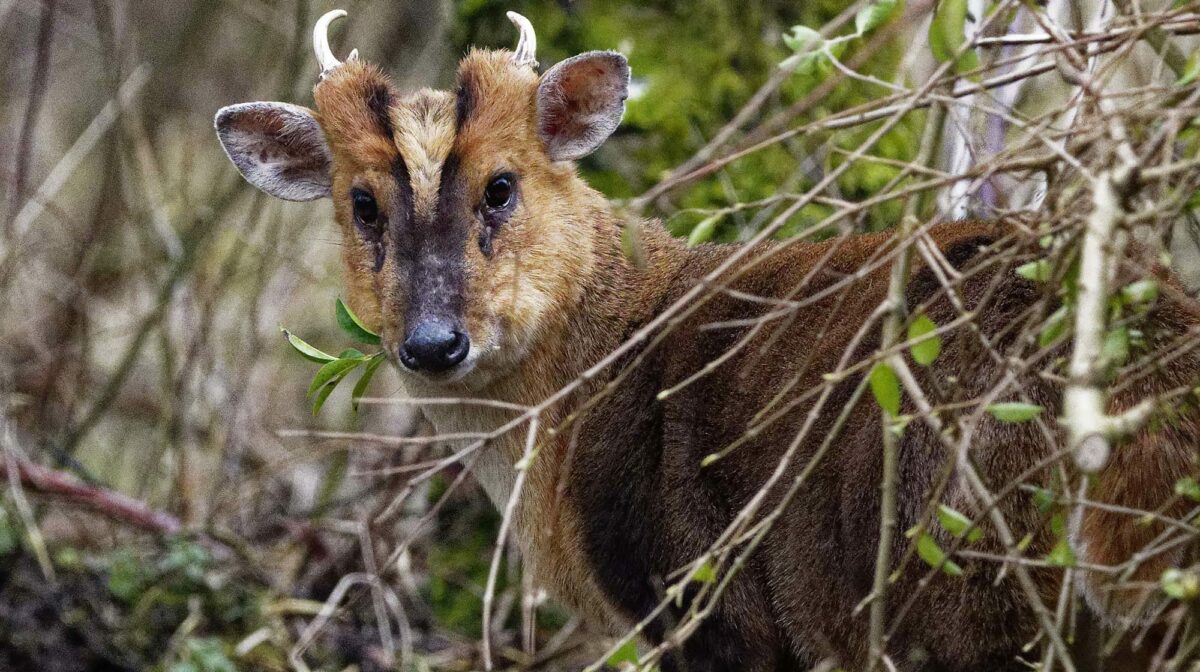Imagine taking a serene stroll through the forest. As you frolic among the flowers and trees, an adorable deer crosses your path. For a second, you think you’re about to have a “Bambi” moment. Then, the deer screams at you. This scenario isn’t just a nightmare hypothetical but also what it might feel like to encounter the strange but adorable muntjac deer.
Videos of this unique “alien deer” have racked up millions of views on TikTok and Reddit. Sometimes called a barking deer, the muntjac has gained a lot of attention for its somewhat frightening facial features and alarming barking sounds. If you haven’t encountered photos or videos of this curious critter, here’s what you should know. Warning: some readers may find the images below a little unsettling.
@texasfunnyfarm Muntjac deer are so weird! #weird #deer #wildside #exotic ♬ original sound – TXFunnyFarm
Muntjacs look similar to common deer found throughout the United States, save for their stockier build and eye-catching scent glands. The video above shows the muntjac’s scent glands in action. While these glands may look strange to people unfamiliar with muntjacs, they’re simply a feature the animal uses to mark its territory.
“As the scent glands expand, they secrete a personalised concoction of chemical compounds that convey information about a deer’s sex, age, and reproductive status, as well as their overall health, well-being, and social hierarchy,” writer Holly Spanner explained in a BBC Science Focus article.
If you can move past the muntjac’s scent glands, you should also know that this critter has a surprisingly fierce bark. Hikers who encounter the deer may see it stamp its front feet before emitting a gruff shout. Listen to the clip below for an example of the muntjac’s signature barking sound.
Not a fan of the sound a muntjac makes? No worries. These deer have a limited distribution. If you live outside the United Kingdom or Southeast Asia, you’re unlikely to see a wild muntjac on your daily walk. While the animal is native to China, they were introduced to the U.K. in 1894. Since then, muntjacs have spread across the English moors and grasslands.
